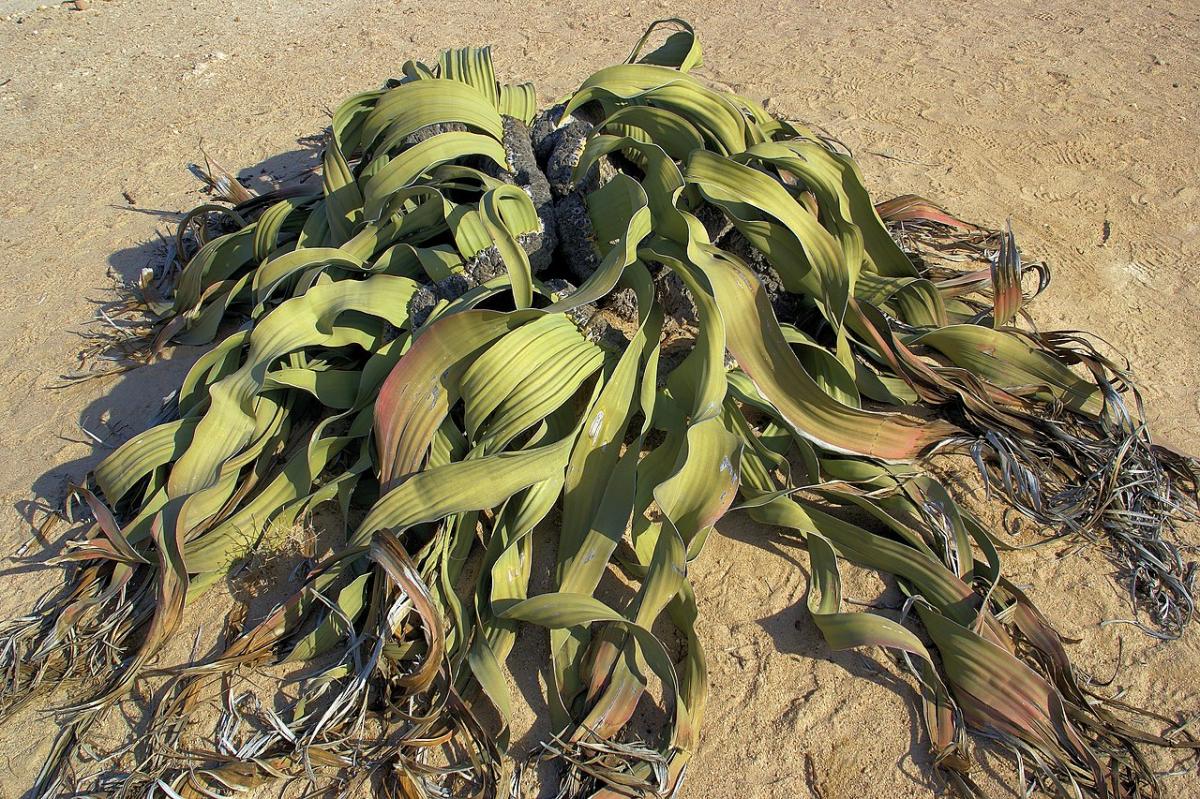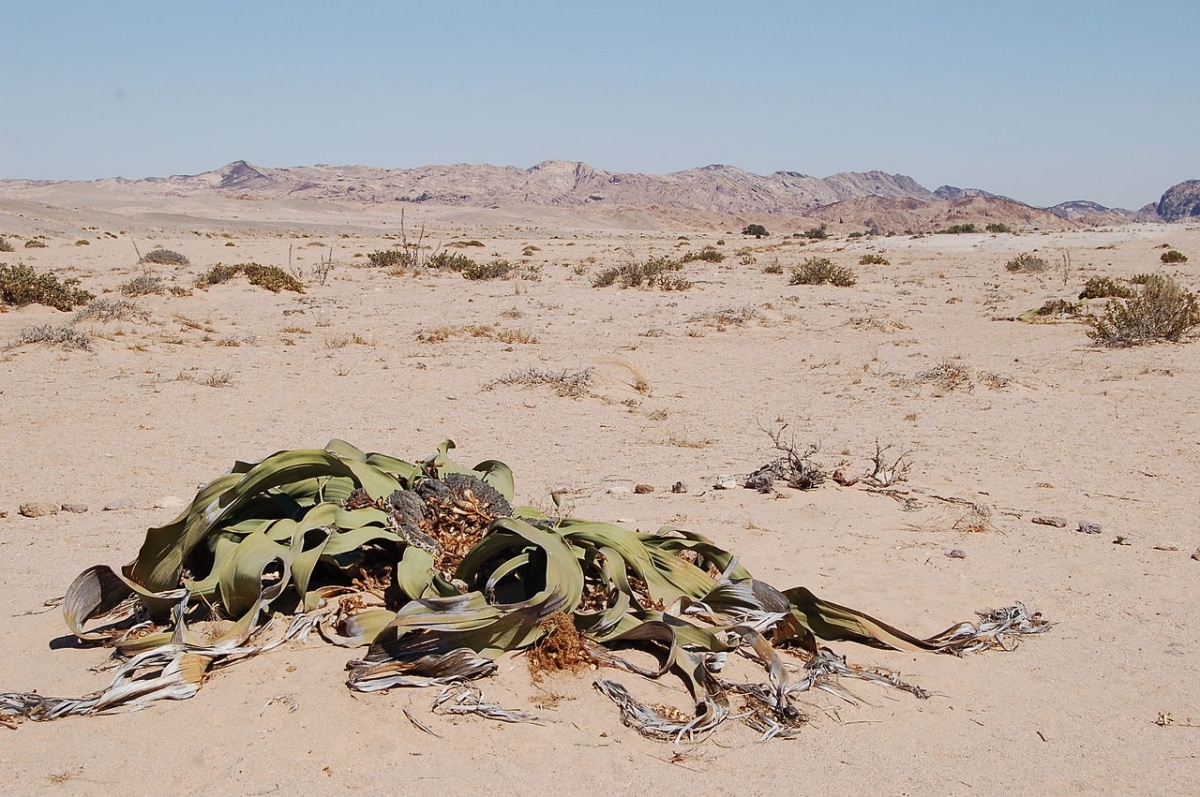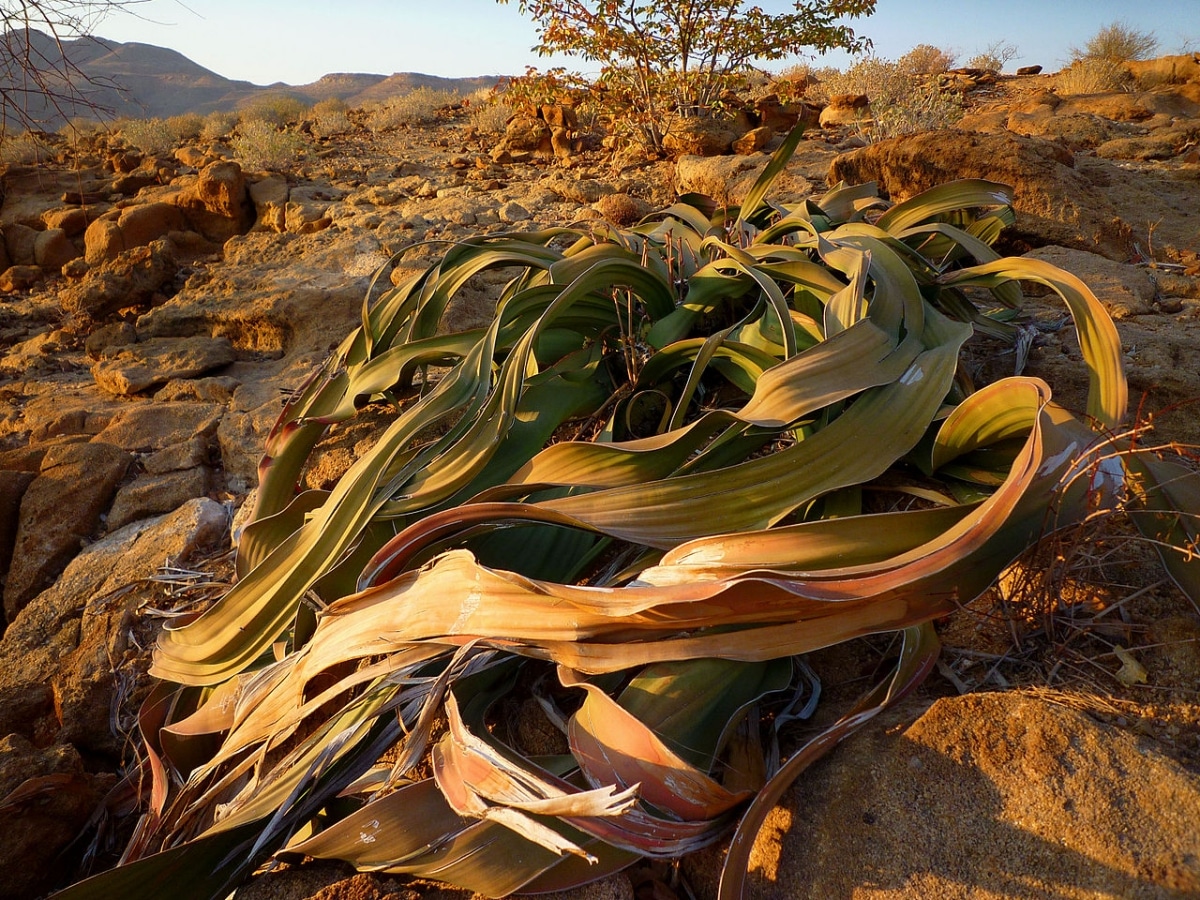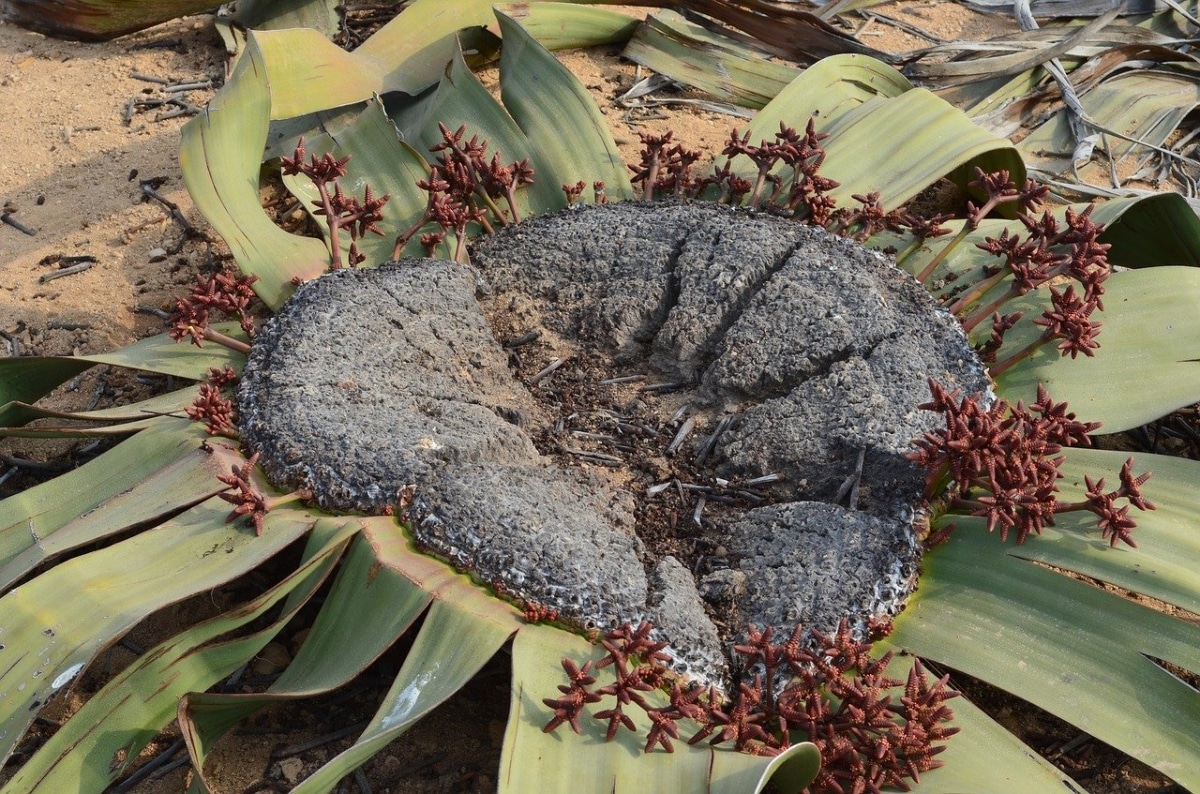
Image - Wikimedia / Hans Hillewaert
In Africa we find one of the first places that began to harbor terrestrial life: the Namib desert. It is old because it is known that it was already formed during the Tertiary Era, about 65 million years ago. Located in the south of the continent, it has an area of 81 thousand square kilometers. Here, it is easy for temperatures to reach 50ºC in summer and it hardly rains in many places, and it is precisely there that we find one of the most resistant plants in the world: the Welwitschia mirabilis, the only species of the genus Welwitschia.
Some call it the immortal plant, or the plant that cannot die. It grows at a very slow rate, but she is so well adapted to her environment that she has always wanted to know what her secret is. Now, finally, a scientific study has revealed it.

Image - Wikimedia / Sara & Joachim
With only two inches of rainfall per year, the welwitschia It is a plant that grows at a leisurely pace, but that does not prevent it from living up to 3000 years, which is the estimated age of some specimens. This means that the seeds germinated in the early Iron Age, during which we humans learned not only how to work iron but also how to grow plants. But let's not deviate.
Welwitschia was discovered in 1860, by the botanist Friedrich Welwitsch, for this reason, they did not hesitate to use his surname as the name of the genus of the plant. Later, Charles Darwin, as well as other scientists, showed their interest in it, and more specifically, in its longevity. What is it that makes it possible for you to live so many years without flinching, under a scorching sun and with just a few drops of rain a year?
The extraordinary genetics of Welwitschia

Image - Wikimedia / Nanosanchez
Typically, when a plant is subjected to such stress it simply dries out, but Welwitschia does not. What is the reason? An error in the division of cells, which occurred about 86 million years ago. This "mistake" caused the plant genome to double. But that's not all, because having more genetic material implies having to expend more energy, and this in the desert is almost a suicide mission, considering the climatic conditions.
However, the Welwitschia knew how to adapt without problems. According to the study, about two million years ago the activity of retrotransposons (to understand us: they are elements that can be amplified in the genome) intensified as a reaction to heat stress. This caused changes to occur in the genes but without altering the DNA sequence that silenced these retrotransposons.
These changes, known by the technical name of epigenetics, they are passed from one generation to another, with which, the descendants of that first Welwitschia that managed to evolve to adapt to the Namib desert already germinated with this quality.
Curiosities the Welwitschia mirabilis
As a result of these important changes the volume of the plant was reduced, and consequently also the energy consumption. But there is still more: the leaves sprout from the basal meristem, that is, from the very center of the plant, while in most species the new foliage arises from the branches or stems.
Another curious fact is that it only has two leaves. When you see images it gives the feeling that you have to have more, but it really is not like that. They start out being cotyledons of about 30 millimeters, and little by little they are transformed into simple, tapered and green leaves that get to measure approximately one meter in length.
Although drought is the undisputed protagonist of the Namib, this plant manages to stay hydrated thanks to the evening dew. We tend to think that plants absorb water only through their roots, but the main origin of all that we see and know is in the sea. Therefore, the pores or stomata react by opening. When it rains a lot, on the other hand, they are kept closed because an excess of water could drown them.

It is difficult for a human to see Welwitschia flourish; however, some lucky ones have. Thanks to them, it is known that it is a dioecious species; that is there are male and other female specimens. This only complicates the possibility of leaving offspring, which is why it is almost impossible to find seeds for sale, and when they are found, they have a high price (by the way, if you get them, do not forget to treat them with copper powder as they are very vulnerable to fungal infections).
The flowers are grouped in inflorescences that sprout from the very center of the plant, and they are red. They lack petals, since these are structures that in a place like the desert, where there are hardly any insects, would only mean a huge waste of water and for nothing.
Thus, the Welwitschia mirabilis can help botanists develop crops more resistant to dry environments, something that will come in handy if we take into account that in many parts of the world the climate is warming and the rain clouds are being seen less and less.
This is the study link in case you are interested: Nature study